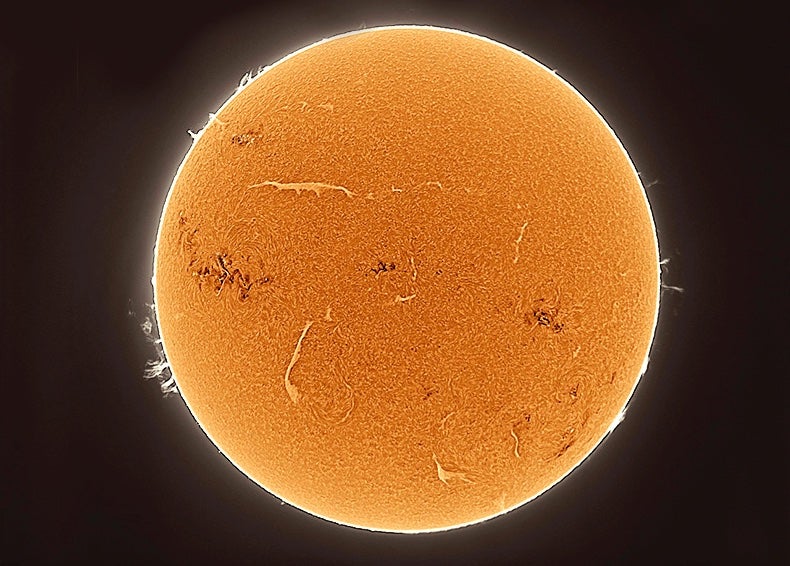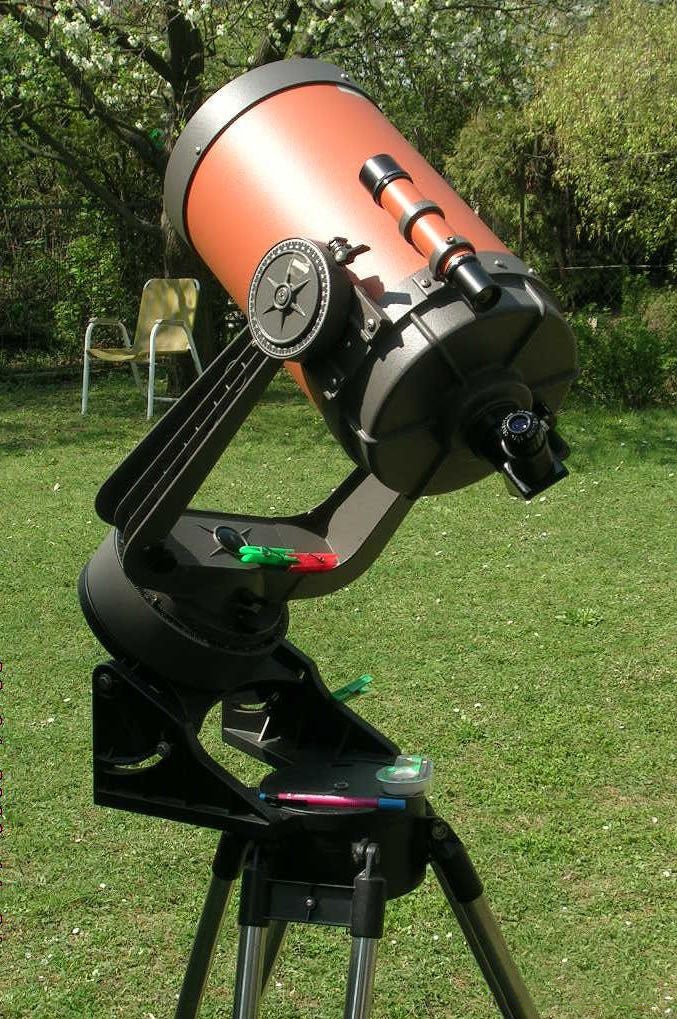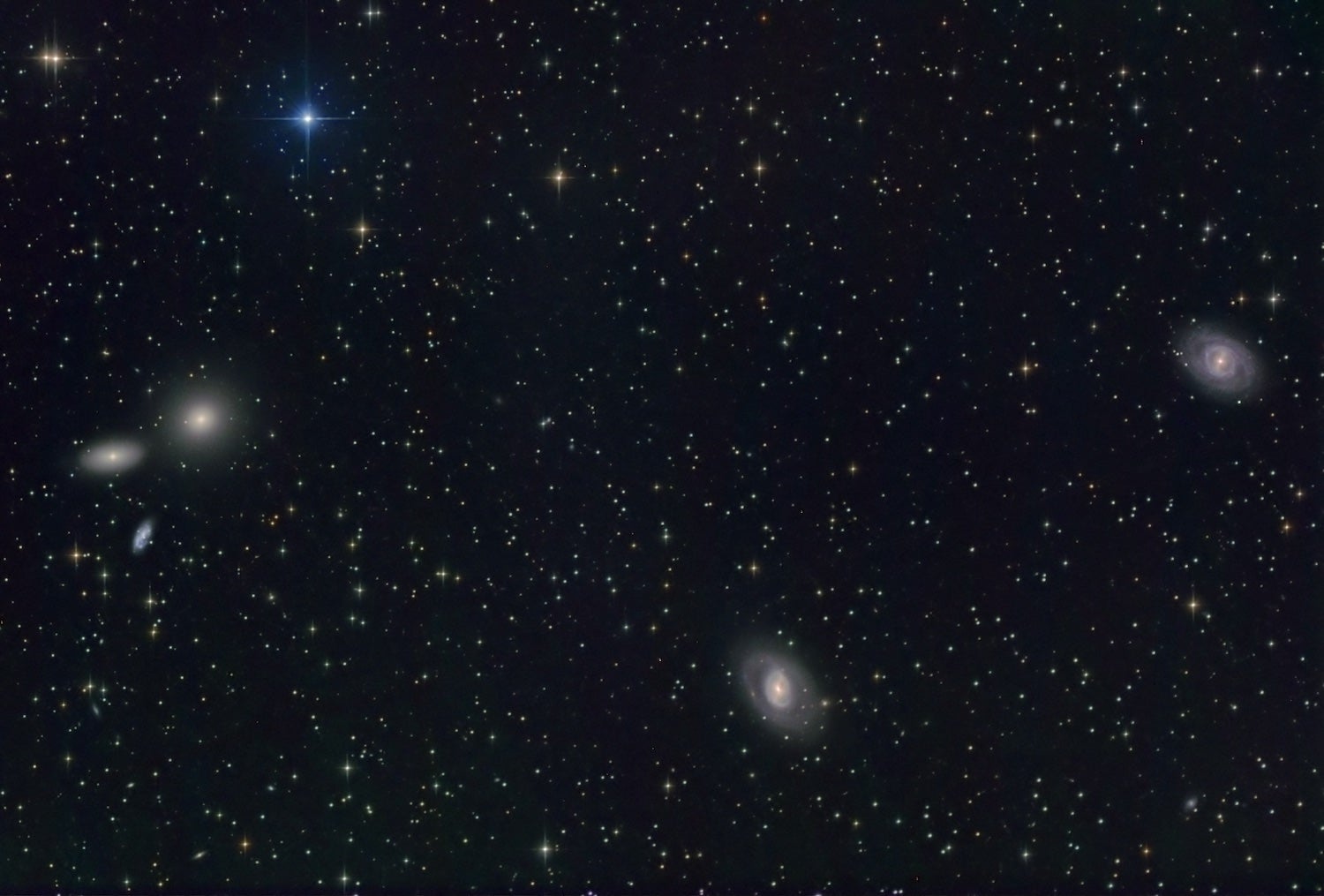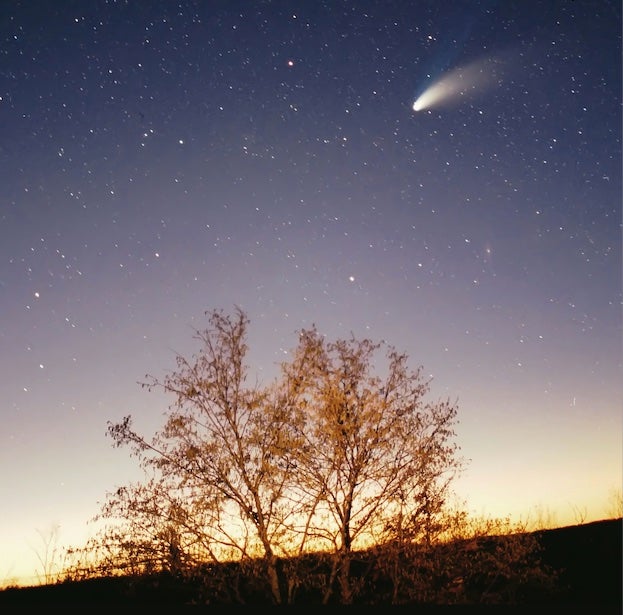
With this issue, Astronomy celebrates its 50th anniversary. I bought the first issue of the magazine from a newsstand in Columbus, Ohio. While the stories eventually drew my interest, I was more fascinated with the ads. With the turn of each page, my question was, “Is there anything new that can help me observe?”
Things haven’t changed much. Now — as I begin construction on a new observatory — my interests tend more toward innovative mounts and eyepieces rather than scopes and cameras. But doing something new makes me think of all the innovations that have led to this point. With that mindset, I offer a look at some of the benchmarks of our hobby that have taken place during the past 50 years. If I missed anything significant, please let me know by sending an email to mbakich@astronomy.com.
The 1970s

Both Celestron and Meade had been established in the early part of the decade, and their products were rising in popularity. During the year Astronomy debuted, Celestron offered a 14-inch Schmidt-Cassegrain telescope. And while you could purchase the optical tube assembly separately, the company included a tripod, a 26mm Plössl eyepiece, and a wedge, which turned the mount into an equatorial one that could compensate for Earth’s rotation. Amateur astronomers could unpack the boxes and observe on the same night!
In 1975, California companies Orion Telescopes & Binoculars and DayStar Filters began operation. Orion started as a retailer rather than a manufacturer, and offered a wide range of products. DayStar was the first company to produce Hydrogen-alpha filters for amateur astronomers to observe the Sun in that wavelength. Both companies are still going strong today. Mobile astronomy saw a major innovation in 1976, when New Jersey-based Edmund Scientific introduced the Astroscan, a fire engine red 4.1-inch f/4.2 reflector. The scope, whose length was less than 18 inches (45.7 cm), had a rounded base that sat atop a fitted stand you could place on a table. What most observers did, however, was sit in a chair and cradle it. Many thousands were sold until it was discontinued in 2013.
In 1978, Kodak released its Technical Pan Film, an extremely fine-grain panchromatic (responsive to all wavelengths) black-and white film. It wasn’t just the grain that amateurs liked, though. Tech Pan had low reciprocity failure, meaning its speed remained constant during long exposures. It also was sensitive to the Hydrogen-alpha wavelength (6562.8 Angstroms), which made it a good choice for photographers imaging nebulae. The company officially discontinued the film in 2014 (but had stopped making it at least a decade earlier).
As the decade closed, one of the most popular star parties began operation. In August 1979, the first Texas Star Party was held at Davis Mountains State Park. Three years later, it moved to the Prude Ranch in Fort Davis, where it’s been held ever since.

The 1980s
The first year of this decade was a big one. In Astronomy’s March issue, amateur Don Machholz made the first written mention of a “Messier marathon.” Springtime observing hasn’t been the same since.
Large-scope observing became common for amateur astronomers when Coulter Optical introduced the Odyssey I, a 13.1-inch Dobsonian-mounted reflector. It sold for $395. Tele Vue Optics started a trend in wide-field eyepieces when it introduced the 13mm Nagler, which sported an 82°-wide apparent field of view. And a 13-part PBS television series called Cosmos: A Personal Voyage debuted Sept. 28.
The following year, the era of the apochromatic refractor began when Astro-Physics produced the first oil-spaced triplet objective lenses. The company labeled them “color free.” On Sept. 16, 1982, now-Editor David J. Eicher began working at Astronomy. He’s been with the magazine — working pretty much every job — 41 out of its 50 years.
Two major amateur get togethers began mid-decade: The Okie-Tex Star Party in 1984 and the Winter Star Party in 1985. Also in 1985, the first mention of a CCD camera for sale appeared in Astronomy. It was five short lines of text in the “Astronomical Equipment Directory.”
It was also in the 1980s that amateurs embraced the concept of astronomical tourism. The main reason was that lots of us were smitten with the idea of seeing Halley’s Comet, which, at its peak in March and April 1986, was a much better sight from the Southern Hemisphere. Supernova 1987a, which appeared in February of that year, also was a draw to southerly locales.

The 1990s
Imagers who were early adopters of CCD cameras rejoiced as the 1990s began and Adobe Systems released Photoshop. The following year, amateurs who wanted to try their hand at making a telescope could buy a copy of John Dobson’s book, How and Why to Make a User-Friendly Sidewalk Telescope. The so-called Dobsonian revolution had begun (and continues today).
For those who chose to buy a scope rather than build one, finding and tracking objects got a lot simpler when, in 1992, Meade Instruments began selling the first successful amateur go-to telescope: the LX200.
A pair of popular telescope companies got their start in the 1990s as well. Rick Singmaster founded Starmaster Portable Telescopes in Arcadia, Kansas, and Vic Maris started Stellarvue Telescopes in Auburn, California.
Amateur astronomers — especially those who were active in astronomy clubs — also remember the ’90s for three amazing comets that caught the public’s attention in major ways. The first was the impact of Comet Shoemaker-Levy 9 (which had been discovered in March 1993) with Jupiter. Twenty-one fragments of the comet hit the giant planet in July 1994. I recall doing as many as 10 lectures a night about the impact at the Astronomical Society of Kansas City’s public observatory in Lewisburg, Kansas. Good times.
Second was the close approach of Comet Hyakutake in March 1996. At a distance of only 9.3 million miles (15 million kilometers), it sported a colorful (green! blue! purple!) tail that stretched more than halfway across the sky. With its head near Polaris and its tail stretching through Leo, if you saw it from a dark site, you’d never forget it.
And then came Comet Hale-Bopp. Visible to naked eyes for a year and a half, it reached perihelion (its closest point to the Sun) April 1, 1997. It holds the record for the most-observed comet in history — by far. But more than being great sights, these three comets — especially Hale-Bopp — were responsible for substantial increases in telescope sales, astronomy club membership, and magazine subscriptions.

The new century
The past two decades have contributed significant improvements to telescopes, mounts, cameras, and accessories. But by far the greatest leaps have been in the area of image processing.
As of this writing, Photoshop is up to version 24 (and it can’t even open files created by its 1990 incarnation). Other image processing programs include DeepSkyStacker, GIMP, PixInsight, Registax, SiriL, and Star Tools.
The astronomical (yes, I said it) rise in cellphone usage has triggered a major influx of astronomy-related apps. One set — dubbed planetarium software — offers detailed, full-sky celestial maps that will identify anything you point the phone at.
Telescope companies also are starting to embrace cellphone tech. In 2022, Celestron introduced its StarSense Explorer line. These telescopes incorporate simple (also inexpensive) alt-azimuth mounts and the GPS feature in your phone. Using the company’s free app, which guides you via arrows, you move the telescope by hand until the bull’s-eye is on your chosen celestial target.
With regard to events, the 21st century has seen a huge rise in what I like to call “eclipse tourism.” A growing number of amateur astronomers are combining trips to view total solar eclipses with fanciful destinations. Since 2001, for example, my wife and I have been part of eclipse tours to South Africa, French Polynesia (including Pitcairn Island), Italy, Greece, Bolivia, Easter Island, Australia, Chile, and more.
Eclipses closer to home, of course, can be just as amazing — and a lot less expensive to get to. The upcoming solar eclipse on April 8, 2024, will provide another grand spectacle for millions of amateur skywatchers across the U.S. Make sure you see it so that it becomes part of your personal astronomical history.
The future
During my entire time with Astronomy, I’ve made a single correct prediction about the future of our hobby: I said that telescopes would eventually have “one-button” setup. Turn it on, give it some time, and observe. That said, my record is better than most people I know.
My point is that it’s hard to predict where inventive minds and advances in technology will take amateur astronomy. But it will be agrand journey, and we’ll all benefit from the results. Here’s to another spectacular 50 years.









